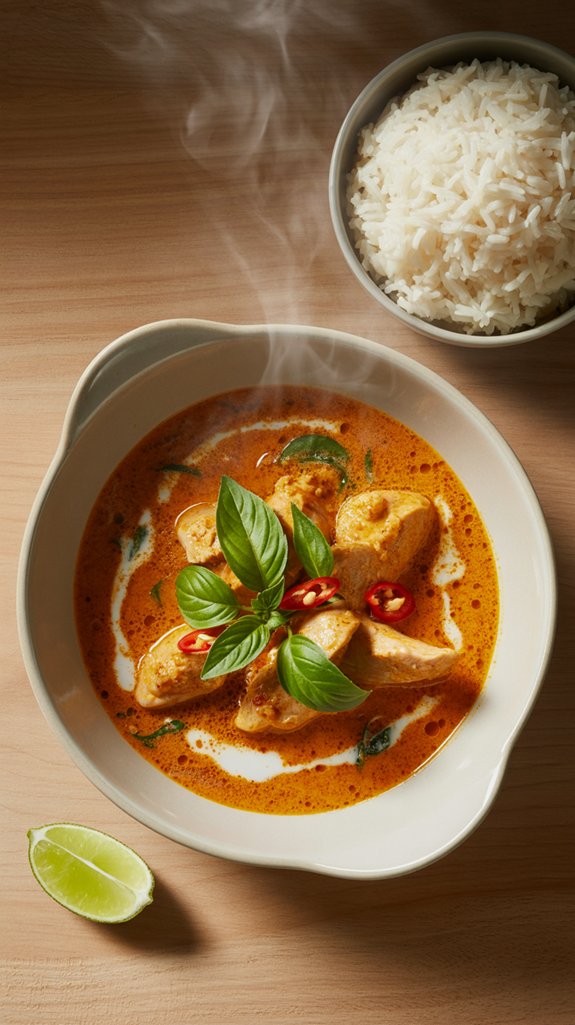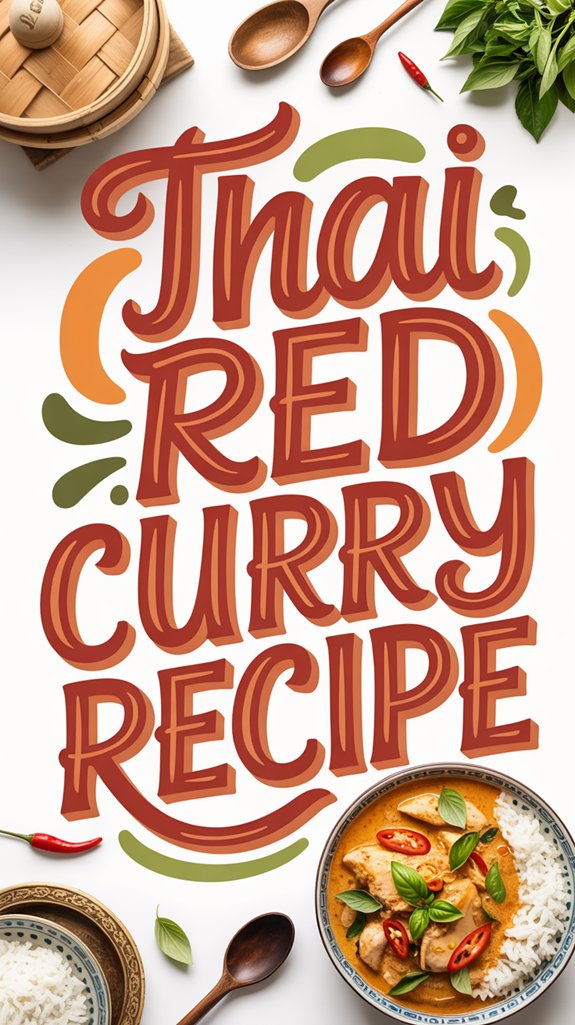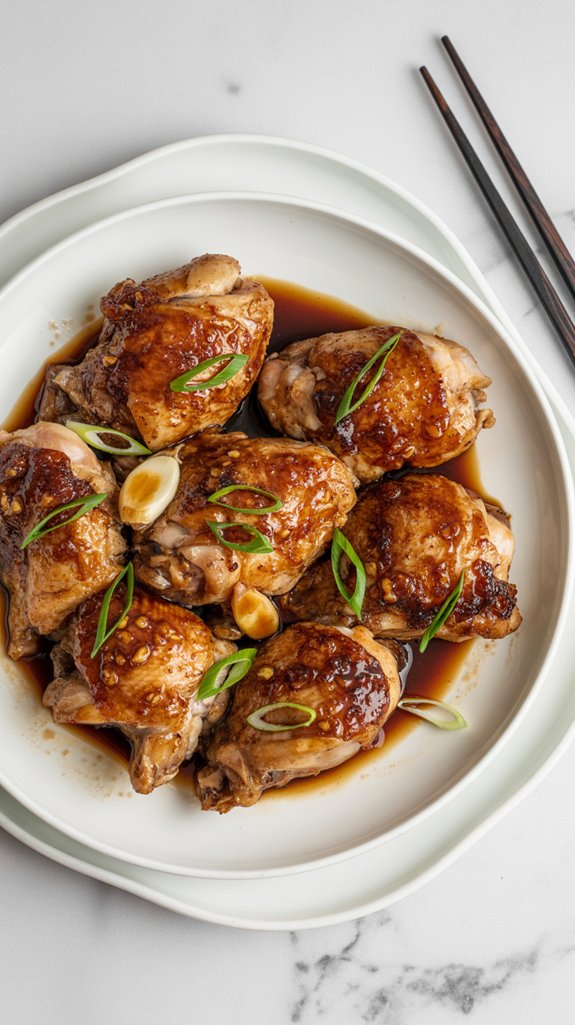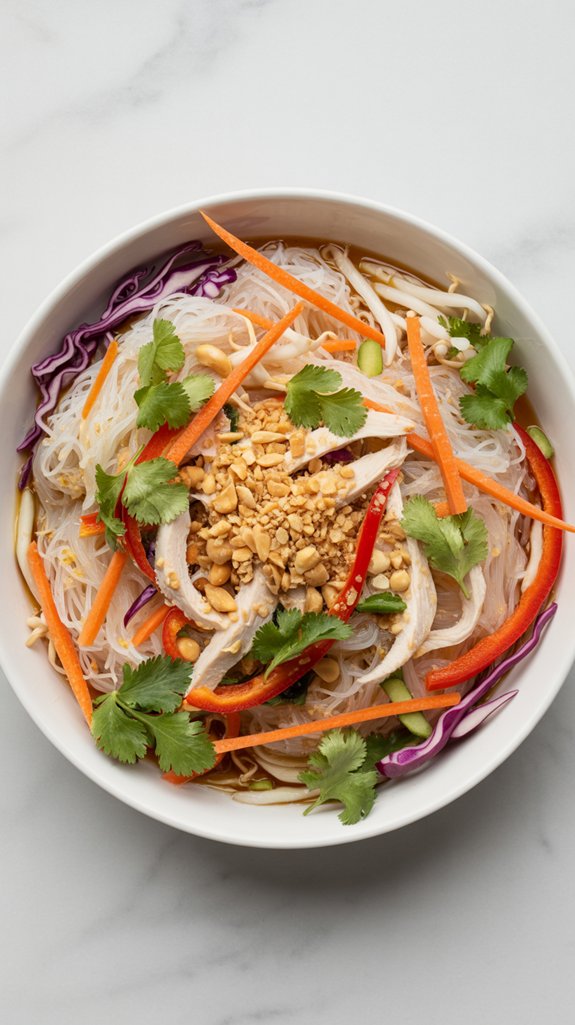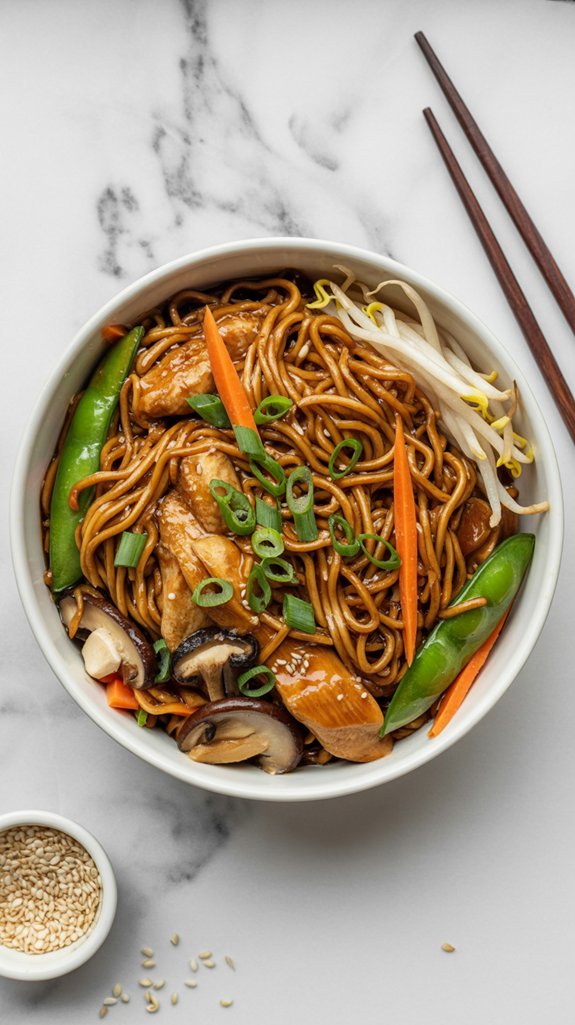Why You’ll Love This this Aromatic Thai Red Curry Chicken
This fragrant curry transforms simple chicken breasts into something that smells so incredible, your neighbors might start lingering by your front door with suspiciously empty bowls.
The creamy coconut milk mellows out that bold red curry paste, creating a sauce that’s rich enough to make you forget you’re eating something that’s actually pretty healthy.
Plus, it all comes together in one pan in about 30 minutes, which means you can have restaurant-quality Thai food on your table faster than most delivery apps can find your house.
Ingredients List
You’ll need just five simple ingredients to create this restaurant-worthy curry that’ll have your kitchen smelling like a Bangkok street market.
- 2 to 2½ pounds boneless skinless chicken breasts
- 1 tablespoon Thai red curry paste
- 1 (13-ounce) can coconut milk (unsweetened)
- 2 tablespoons olive oil
- ¼ to ½ teaspoon sugar (to taste)
- Simple ingredient list means fewer trips to specialty stores – most of these items live happily in regular grocery stores
- Coconut milk provides healthy fats while keeping the dish naturally dairy-free
- Minimal oil usage keeps this surprisingly light for such a rich-tasting dish
- Sugar is completely optional – some curry pastes are spicier than others, so taste first before adding sweetness
- No artificial additives or preservatives when you make it yourself, unlike many restaurant versions
- Prep the chicken – Wash chicken breasts in cold water, pat dry, remove tendon strings, and cut into bite-size pieces, then season with salt and pepper.
- Sear for flavor – Heat your pot or large skillet over medium-high heat, add olive oil, and brown chicken pieces in batches on all sides.
- Build the curry base – Reduce heat to medium, add curry paste and coconut milk to the pan, stirring well to incorporate any browned bits from the bottom.
- Simmer to perfection – Cover and let simmer for about 20 minutes, checking consistency and simmering longer if you prefer a thicker curry.
- Final touches – Remove from heat, let cool for 1-2 minutes, then stir in sugar to taste before serving over steamed rice.
- Make it heartier – Add cubed potatoes or sweet potatoes early in the simmering process, turning this into a one-pot wonder that’ll stretch to feed unexpected dinner guests
- Spice level control – Balance out too much heat with extra coconut milk or a splash of lime juice, because tears at the dinner table should only come from joy, not pain
- Jasmine rice – The classic choice that soaks up every drop of that creamy, spiced sauce like a delicious little sponge.
- Coconut rice – Cook your rice in half water, half coconut milk for an extra layer of tropical richness that makes the whole meal feel more indulgent.
- Rice noodles – Thin vermicelli or pad thai noodles work wonderfully if you’re craving something with a bit more chew.
- Steamed vegetables – Broccoli, snap peas, or baby bok choy add some fresh crunch and help you feel less guilty about that second helping.
- Naan or flatbread – Perfect for scooping up every last bit of sauce, though you might find yourself making extra curry just to have an excuse for more bread.
- Fresh herbs and lime – A handful of cilantro, Thai basil, or mint leaves with lime wedges on the side lets everyone customize their bowl to their heart’s content.
- Don’t skip the searing step – Those golden-brown bits on your chicken aren’t just for looks, they’re flavor bombs that make the difference between “meh” and “more please.”
- Bloom that curry paste – Let it sizzle in the oil for 30 seconds before adding the coconut milk, because toasted spices are happy spices.
- Use full-fat coconut milk – The light stuff might seem healthier, but it’s like wearing flip-flops to a marathon, technically possible but missing the point entirely.
- Taste as you go – Start with less curry paste than you think you need, because you can always add more but you can’t take it back once your tongue is on fire.
- Let it rest – Give your curry a few minutes off the heat before serving, just like a good steak, it needs time to pull itself together.
- Save some coconut milk – Keep a few tablespoons aside to stir in at the end if your sauce gets too thick, because nobody wants concrete curry.
- Double the recipe – This stuff tastes even better tomorrow, and future you’ll thank present you when dinner is already waiting in the fridge.
- Calories per serving: Approximately 380-420 calories (based on 4 servings)
- Protein powerhouse: Each portion provides 35-40g of lean protein from chicken breast, supporting muscle health and keeping you satisfied.
- Healthy fats: Coconut milk contributes medium-chain triglycerides (MCTs) that may boost metabolism and provide quick energy.
- Low carb friendly: Without rice, each serving contains only 6-8g of carbohydrates, making it keto and paleo compatible.
- Sodium content: Around 600-800mg per serving, mostly from the curry paste and any added salt.
- Fiber: Minimal at 1-2g per serving, so pair with vegetables or brown rice to boost fiber intake.
- Vitamins and minerals: Good source of niacin, selenium, and phosphorus from chicken, plus manganese from coconut milk.
- No added sugars: The small amount of sugar (1-2g per serving) is optional and minimal compared to restaurant versions.
- Dairy-free and gluten-free: Naturally accommodates multiple dietary restrictions without sacrificing taste.
Step by Step Directions
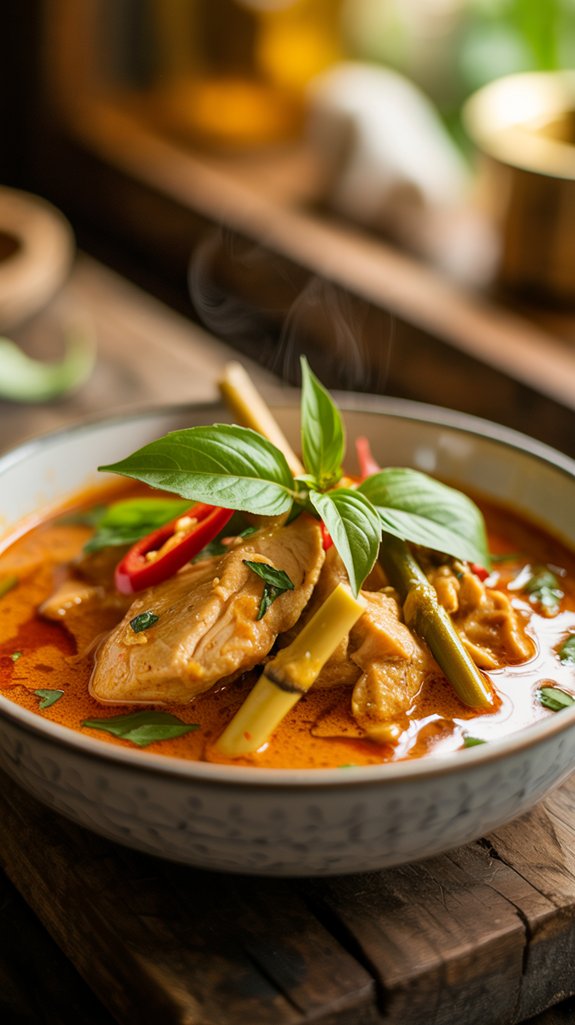
Transform these simple ingredients into an aromatic Thai curry that rivals your favorite restaurant in just 30 minutes.
For best results, use professional stainless steel cookware which provides even heat distribution and superior browning capabilities for developing deep, complex flavors in your curry.
Substitutions and Variations
Additional Things to Serve With This Dish
This curry pairs beautifully with so many sides that you’ll want to make it a regular in your dinner rotation.
Cooking Tips & Tricks (Chef’s Notes)
A few pro tips can turn your good curry into restaurant-quality greatness that’ll have everyone asking for your secret.
Nutritional Facts
This Thai Red Curry Chicken packs serious flavor while keeping things relatively healthy, with each serving delivering quality protein and beneficial fats.
Fun “Did You Know?”
Ever wondered why Thai red curry gets its vibrant color from more than just chilies?
I’ve found that traditional red curry paste includes dried red spur chilies, but it’s actually the combination with galangal, lemongrass, and kaffir lime zest that creates that deep, rich hue.
Here’s something fascinating: authentic Thai red curry paste contains up to thirteen different ingredients, and monks originally created these complex spice blends in temple kitchens.
The coconut milk we use isn’t just for creaminess—it’s essential for balancing the curry’s heat level.
Thai families often pass down their secret curry paste recipes through generations.

